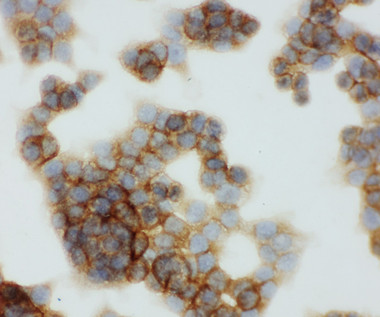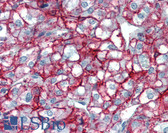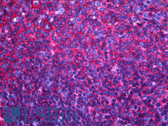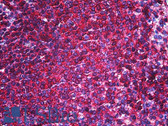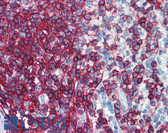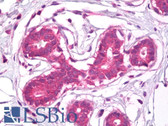 Loading... Please wait...
Loading... Please wait...- Call us on 443-686-9618
- Wish Lists
- My Account
- 0.00
Categories
- Home
- IHC Antibodies
- CD44 IHC Antibody
CD44 IHC Antibody
Product Description
Description |
The CD44 gene, which is a transmembrane protein, is expressed as a family of molecular isoforms generated from alternative RNA splicing and posttranslational modifications. The gene, which contains 19 exons spanning some 50 kb of genomic DNA, is a widely expressed integral membrane protein that acts as a receptor for hyaluronan (HA) and is important to cell-extracellular matrix interaction. CD44 binding with HA can play an important role in cellular aggregation and tumor cell growth. CD44 is necessary for limb development and functions in a novel growth factor presentation mechanism. A specific CD44 splice variant is crucial for the proliferation of these mesenchymal cells. CD44 glycoproteins are involved in leukocyte extravasation but also in the regulation of growth factor activation, stability, and signaling. Moreover, it plays a pivotal role in arteriogenesis.
|
Catalog Number
|
IW-PA1021 |
Quantity
|
9 ml |
|
Host
|
Rabbit
|
|
Clone
|
Polyclonal
|
|
Isotype
|
IgG
|
|
Immunogen
|
A peptide mapping at the C-terminal end of human CD44, identical to the related rat and mouse sequence.
|
|
Purity
|
Immunogen affinity purified
|
|
Conjugate
|
Unconjugated
|
|
Species Reactivity
|
Human, mouse, rat. Not tested in other species. |
|
Positive Control
|
Human tonsil, thymus, spleen, skin. |
|
Cellular Localization
|
Membrane
|
|
Form
|
Ready to use solution in PBS with stabilizer and 0.01% sodium azide. No further dilution needed. Serum blocking step should be omitted.
|
|
Storage
|
Store at 2-8 °C. Do not freeze.
|
|
Applications
|
IHC-P: Heat Induced Epitope Retrieval or Proteinase K digestion is required on formalin fixed paraffin sections. IHC-Fr: Acetone fixed frozen sections. ICC: Acetone fixed cultured cells.
|
|
Limitations
|
This product is intended for Research Use Only. Interpretation of the test results is solely the responsibility of the user.
|
|
Precautions
|
Users should follow general laboratory precautions when handling this product. Wear personal protective equipment to avoid contact with skin and eyes.
|
|
References
|
1. Screaton GR, Bell MV, Jackson DG, Cornelis FB, Gerth U, Bell JI. Genomic structure of DNA encoding the lymphocyte homing receptor CD44 reveals at least 12 alternatively spliced exons. Proc Natl Acad Sci U S A. 1992 Dec 15; 89(24):12160-4. 4. Sherman L, Wainwright D, Ponta H, Herrlich P. A splice variant of CD44 expressed in the apical ectodermal ridge presents fibroblast growth factors to limb mesenchyme and is required for limb outgrowth. Genes Dev. 1998 Apr 1; 12(7):1058-71.
|

